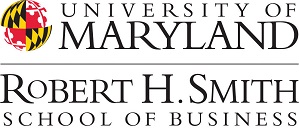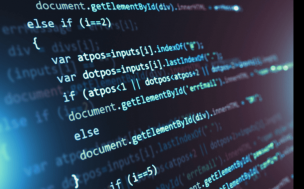This is arguably most pertinent for HR leaders, as they hold in their hands the stats and figures that determine where their employer’s best human resources lie. Used correctly, data analytics can be the driver of a company’s productivity growth.
“As organizations get bigger it becomes much harder to get a feel on how everyone’s doing, and what support individuals need,” says Wendy Moe, associate dean for master’s programs at the University of Maryland’s Robert H. Smith School of Business.
“Data helps that,” she continues, “it’s all being collected, and it’s a waste if that collective data is not assessed.”
The education MBA students receive at Smith, Wendy thinks, shows why learning about big data analytics on your MBA is the key to a career in HR.
“Smith MBAs are going to know how to handle the data associated with that role. Our goal is to graduate MBAs who aren’t afraid of data, can try new things [with it], and have a solid foundation in business fundamentals, so as data and tools keep changing, they have the skill set to adapt and change with them.”
Wendy stops short of saying the Smith MBA is an MBA in data analytics, but her opinion is that the business environment today is extremely data heavy, so everything MBA graduates eventually do will involve data analysis in some form.
“An MBA now who doesn’t have those data skills will not be able to succeed, and they’ll struggle in the long-term for sure,” she says.
How the Smith MBA curriculum develops data analytics skills
On all the core courses at Smith, Wendy explains there is a heavy presence of data driven decision making, as well as data mining and modelling.
MBA students then choose their career track, giving them a deep-dive into their chosen field—whether that’s finance, marketing, operations and supply chain, or general manager and consulting.
They follow the path of their chosen course and gain a holistic understanding of how data and analytics are leveraged in those areas, explains Wendy.
The value of an MBA at the University of Maryland’s Robert H. Smith School of Business is also found in their approach to experiential learning. In Smith’s data labs, students are given company data sets to work on, and then challenged to solve a real-life business question.
On the market forecasting class Wendy teaches, she cites an example where her students were given a set of data on sales, website visits, or pricing for a company, and challenged to forecast what sales would be for a specific product or brand moving forward.
Last month, Smith ran the Smith Analytics Consortium, during which students teams from across all the business school’s programs work together on a given data set to analyze and generate insight informing date driven decision making—Wendy adds that at the beginning of the month students are given workshops on how to best handle and present their data, before presenting to Smith’s corporate partners at the end for a cash prize.
How data analytics has changed the skill set of a modern HR leader
Margrét Bjarnadóttir (pictured), assistant professor of management science and statistics at Smith, believes data analytics has indeed changed the skill set required from a modern HR leader
“I think you need to understand the fundamentals of decision support systems,” she says, explaining that when she teaches MBAs data analytics she focuses on hands on work with dirty data, getting students to make their own models and analyze them in depth.
This trains them to be good consumers of data driven support systems—not just how you can use that in a role as a HR manager, but also building their awareness of the pitfalls.
Two decades ago, she says, to run hundreds of thousands of records you’d have probably needed a large computer locked in a basement, perhaps, and would needed strong technical skills to run data models—nowadays, Margrét says, everything runs at the click of a button.
But that has heightened the need among HR business leaders to better decipher the data—where has it come from? What does it say? Where are the anomalies?
A recent case involving Amazon points to the precarious nature of misinformed data sets—Amazon created a screening tool for hiring and the majority of the data was taken from white males, so the data inevitably highlighted only variables of the workforce correlated to being white and male.
“It’s not just what the models doing, but what do we have to think about when applying them in practice,” explains Margrét.
Margrét herself, as part of her research at the University of Maryland’s Robert H. Smith School of Business, has developed a data decision tool to fight the gender pay gap.
She is aiming to make it easier for HR managers to measure the gap within their companies, and provide a suggestion on who should get raises, and how large these should be, while at the same time keeping in mind the operational constraints and pay structure of the organization.
“I think these data driven tools can bring to light some of these unconscious biases and how they manifest within organizations,” she says.









